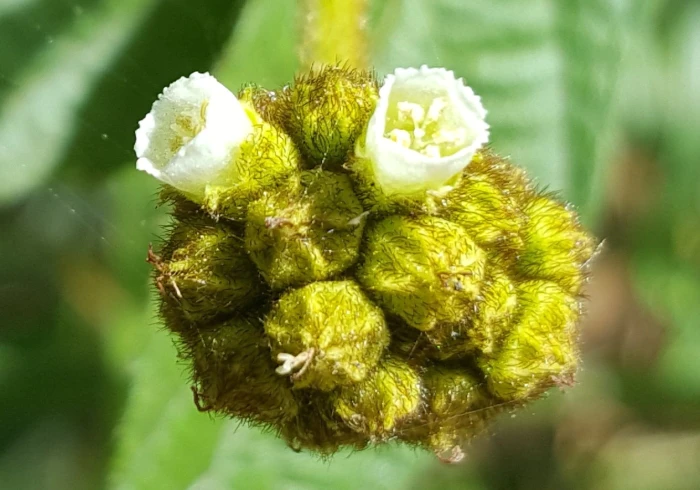(Varronia polycephala)
(Varronia polycephala)
/
/

© alessandradalia
CC BY-SA 4.0
Image By:
© alessandradalia
Recorded By:
Copyright:
CC BY-SA 4.0
Copyright Notice:
Photo by: © alessandradalia | License Type: CC BY-SA 4.0 | License URL: http://creativecommons.org/licenses/by-sa/4.0/ | Uploader: alessandradalia | Publisher: iNaturalist |















Estimated Native Range
Climate Requirements for Poughkeepsie, New York
| This Plant | Your Site | Plant Suitability for Your Location | ||
|---|---|---|---|---|
| • Precipitation | 13" - 146" | 44" | Aquatic | Aquatic |
| • High Temp. | 55°F - 97°F | 85°F | Your summer temperatures are normal for this plant. | Excellent |
| • Low Temp. | 32°F - 73°F | 16°F | Your winter temperatures may be too cold for this plant | Too cold |
This plant should grow well at your location with about N inches per year (Y minutes per month) of irrigation.
Summary
Varronia polycephala, synonym Cordia polycephala, is a shrub native to dry forests, coastal thickets, and scrublands of the Caribbean, including the Virgin Islands, Haiti, and Puerto Rico. This species often thrives in open disturbed areas and is well adapted to the harsh conditions of coastal environments. It can grow to a height of 6-10 feet (1.8-3 meters) with a similar spread. Varronia polycephala has a dense, rounded form with leathery leaves and produces clusters of small, white, sessile flowers that are followed by bright red fruits, which are covered by an enlarged calyx, making them quite showy.
The plant is valued for its ornamental features, including its attractive foliage and fruit display. It is used in traditional medicine and the stems have been used as tooth cleaners. The sweet fruits are edible and enjoyed by local wildlife and humans alike. In cultivation, Varronia polycephala is drought-tolerant and prefers well-drained soils, thriving in full sun to partial shade. It is suitable for xeriscaping, coastal landscaping, and as a wildlife attractant in gardens. While it is not commonly known for having aggressive roots or serious disease problems, it can be susceptible to root rot in poorly drained soils.CC BY-SA 4.0
The plant is valued for its ornamental features, including its attractive foliage and fruit display. It is used in traditional medicine and the stems have been used as tooth cleaners. The sweet fruits are edible and enjoyed by local wildlife and humans alike. In cultivation, Varronia polycephala is drought-tolerant and prefers well-drained soils, thriving in full sun to partial shade. It is suitable for xeriscaping, coastal landscaping, and as a wildlife attractant in gardens. While it is not commonly known for having aggressive roots or serious disease problems, it can be susceptible to root rot in poorly drained soils.CC BY-SA 4.0
Plant Description
- Plant Type: Shrub
- Height: 5-8 feet
- Width: 6-10 feet
- Growth Rate: Moderate
- Flower Color: White
- Flowering Season: Spring, Summer
- Leaf Retention: Evergreen
Growth Requirements
- Sun: Full Sun
- Water: Low
- Drainage: Fast
Common Uses
Bird Garden, Butterfly Garden, Drought Tolerant, Low Maintenance
Natural Habitat
Native to dry forests, coastal thickets, and scrublands
Other Names
Common Names: Black Sage, Black Sage (Virgin Isl.), Mahot Fin, Palo De Perico, Perico, Petit Mahot (Lesser Antilles), Saraguaso, Saraguero (Puerto Rico)
Scientific Names: Varronia polycephala, Cordia adnata, Cordia boliviana, Cordia corymbosa, Cordia corymbosa, Cordia corymbosa, Cordia corymbosa f. hirsuta, Cordia corymbosa f. intonsa, Cordia corymbosa f. typica
GBIF Accepted Name: Varronia polycephala